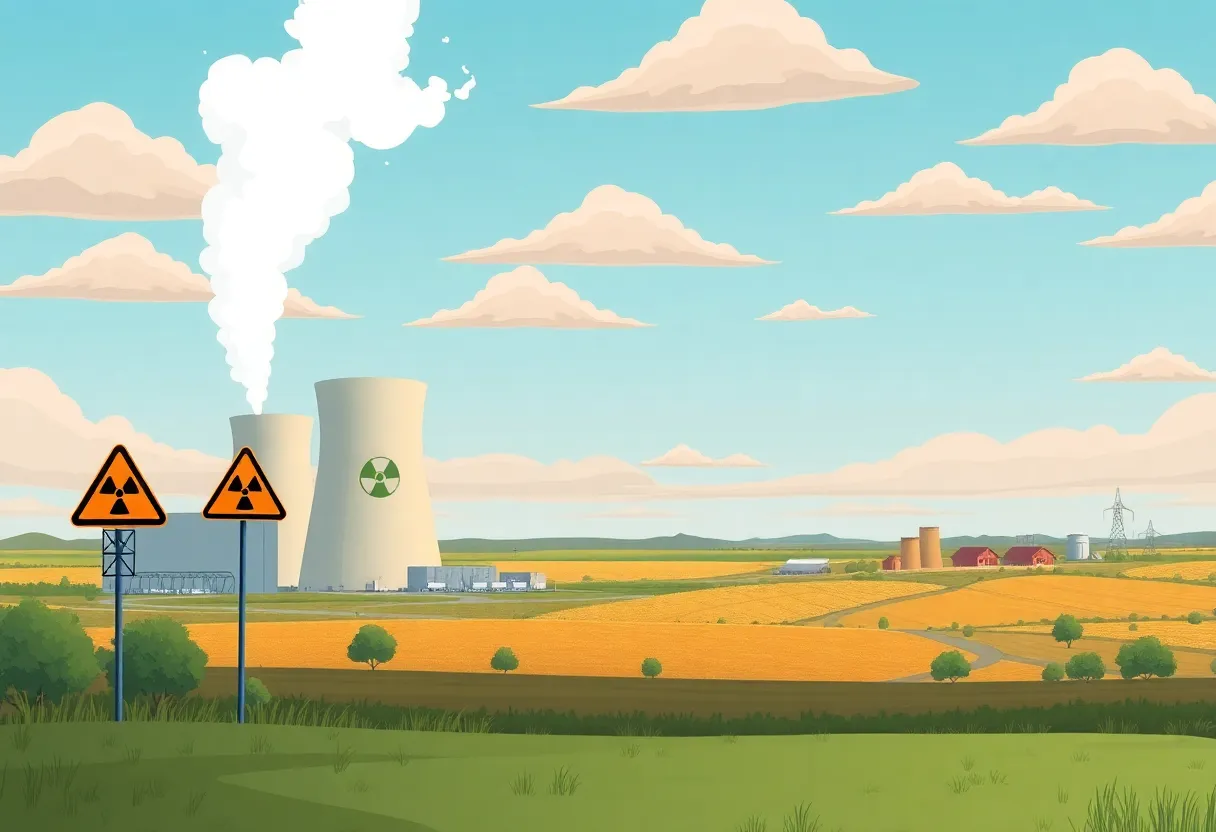Oklahoma, October 21, 2025
The recent cancellation of Wyoming’s nuclear energy project due to funding and regulatory issues raises concerns for Oklahoma’s own nuclear initiatives. Experts caution that if Oklahoma does not diversify its financing and address potential regulatory hurdles, it may face similar setbacks. The state stands to gain $1 billion through nuclear developments, emphasizing the importance of proactive planning to avoid repeating Wyoming’s mistakes.
Wyoming’s Nuclear Project Failure Highlights Risks for Oklahoma’s Energy Plans
Wyoming’s recent loss of a major nuclear energy project, attributed to funding shortfalls and regulatory hurdles, serves as a cautionary tale for Oklahoma’s ambitious nuclear initiatives. The collapse of the project underscores the vulnerabilities in advanced energy developments, prompting experts to warn of similar risks in the Sooner State. Without careful planning, Oklahoma could face delays that jeopardize potential economic gains estimated at $1 billion for its energy market if nuclear plans proceed smoothly.
Key Factors Behind Wyoming’s Setback
The Wyoming nuclear project faltered primarily due to insufficient funding and complex regulatory challenges. Initial investments failed to cover escalating costs associated with site preparation, technology integration, and compliance with federal safety standards. Regulatory bodies imposed stringent requirements that extended timelines and increased expenses, ultimately making the venture financially unviable. These issues led to the project’s cancellation, leaving stakeholders with significant losses and highlighting the precarious balance between innovation and feasibility in nuclear development.
Funding shortfalls were exacerbated by reliance on a single primary investor source, which withdrew support amid rising interest rates and market uncertainties. Regulatory hurdles included delays in obtaining necessary permits and environmental clearances, which are common in nuclear projects but proved insurmountable here. The combination of these factors not only halted progress but also deterred potential future investments in the region’s energy sector.
Implications for Oklahoma’s Nuclear Ambitions
In Oklahoma, similar nuclear projects are in early stages, with state leaders eyeing them as a cornerstone for clean energy transition. The Wyoming experience draws direct lessons for the Sooner State, where experts emphasize the need for diversified financing to mitigate risks. Oklahoma’s energy market stands to benefit immensely if these initiatives avoid such pitfalls, potentially injecting $1 billion into the local economy through job creation, infrastructure development, and energy exports.
State incentives play a pivotal role in bolstering these plans. Oklahoma has introduced tax credits, grants, and streamlined permitting processes to attract investors and reduce financial burdens. These measures aim to prevent the funding gaps seen in Wyoming by encouraging public-private partnerships and federal collaborations. However, experts caution that without proactive strategies, Oklahoma could encounter parallel regulatory delays, especially given the state’s growing demand for reliable power sources amid expanding industrial activities.
Strategies to Avoid Similar Pitfalls
To safeguard its nuclear future, Oklahoma must prioritize robust financial modeling that accounts for volatile energy markets. Diversifying funding through bonds, international partnerships, and renewable energy tie-ins can provide a buffer against economic shifts. Additionally, engaging early with regulators to address environmental and safety concerns could expedite approvals and maintain project momentum.
The emphasis on diversified financing is particularly relevant as Oklahoma balances its traditional oil and gas heritage with emerging clean technologies. Nuclear power offers a stable, low-carbon alternative, but its capital-intensive nature demands careful oversight. By learning from Wyoming’s missteps, state officials can refine policies to ensure that nuclear developments contribute to long-term energy security without derailing due to unforeseen obstacles.
Broader Context in Energy Development
Nuclear energy projects nationwide have faced increasing scrutiny in recent years, driven by concerns over costs and public safety. Wyoming’s failure is not isolated; several proposed facilities in other states have encountered comparable challenges, reinforcing the importance of adaptive planning. In Oklahoma, the push for nuclear aligns with broader goals to diversify the energy portfolio and meet rising electricity needs from data centers, manufacturing, and population growth.
The potential $1 billion gain for Oklahoma’s energy market is projected based on analyses of job multipliers, supply chain impacts, and energy sales. State incentives, including low-interest loans and workforce training programs, are designed to amplify these benefits. Yet, the Wyoming case illustrates that success hinges on addressing funding and regulatory issues upfront.
As Oklahoma advances its nuclear plans, stakeholders are urged to conduct thorough risk assessments. This approach not only protects investments but also positions the state as a leader in sustainable energy. The lessons from Wyoming underscore that while nuclear power holds promise, its realization requires strategic foresight and resilience against common industry hurdles.
Background on Nuclear Energy Trends
The nuclear sector has seen renewed interest globally, fueled by climate goals and the quest for baseload power. In the U.S., advancements in small modular reactors offer hope for more affordable and scalable options. Oklahoma’s initiatives fit into this trend, leveraging its central location and existing energy infrastructure. However, the Wyoming project’s demise reminds developers that even promising ventures can falter without comprehensive support systems.
Looking ahead, Oklahoma’s commitment to state incentives and diversified approaches could set a model for other states. By anticipating and countering risks like those in Wyoming, the Sooner State can unlock the full economic potential of nuclear energy, ensuring a resilient and prosperous energy landscape.
FAQ
What caused Wyoming’s nuclear project to fail?
Wyoming’s nuclear project failed due to funding shortfalls and regulatory hurdles.
How does Wyoming’s loss impact Oklahoma’s energy plans?
The Wyoming experience draws direct lessons for Oklahoma, where experts warn of similar risks in local nuclear initiatives.
What is the projected economic benefit for Oklahoma’s energy market?
Oklahoma’s energy market could gain $1 billion if nuclear plans proceed without delays.
What role do state incentives play in Oklahoma’s nuclear projects?
State incentives bolster Oklahoma’s nuclear plans by providing tax credits, grants, and streamlined permitting processes.
Why is diversified financing important for Oklahoma?
Diversified financing is stressed to mitigate risks like funding shortfalls seen in Wyoming’s project.
Key Features of Wyoming’s Nuclear Project Loss and Oklahoma Implications
The following table outlines the main aspects of the Wyoming nuclear project failure and its relevance to Oklahoma’s energy strategies.
| Aspect | Wyoming Details | Oklahoma Implications |
|---|---|---|
| Primary Cause | Funding shortfalls and regulatory hurdles | Experts warn of similar risks in local initiatives |
| Financial Risk Mitigation | Reliance on single funding source led to collapse | Need for diversified financing stressed |
| Economic Projection | Project cancellation resulted in losses | Energy market could gain $1 billion if plans proceed without delays |
| Support Mechanisms | Limited incentives contributed to delays | State incentives bolster nuclear plans |
| Lessons Learned | Early regulatory engagement was insufficient | Diversified approaches can prevent pitfalls |
Deeper Dive: News & Info About This Topic
HERE Resources
Oklahoma City Advances Nuclear Energy Study with Federal Support
Yukon Business Owners Fight Against Delivery Blockages for Disabled Access





